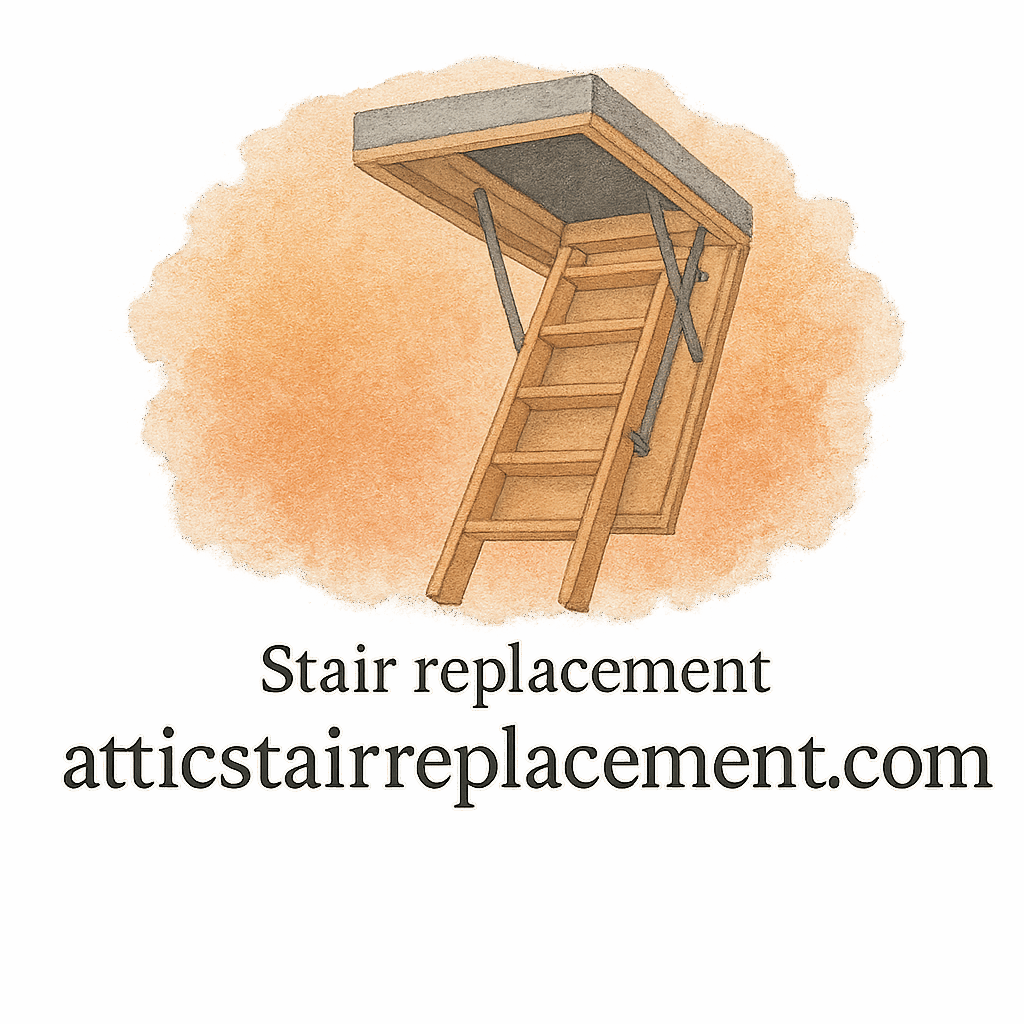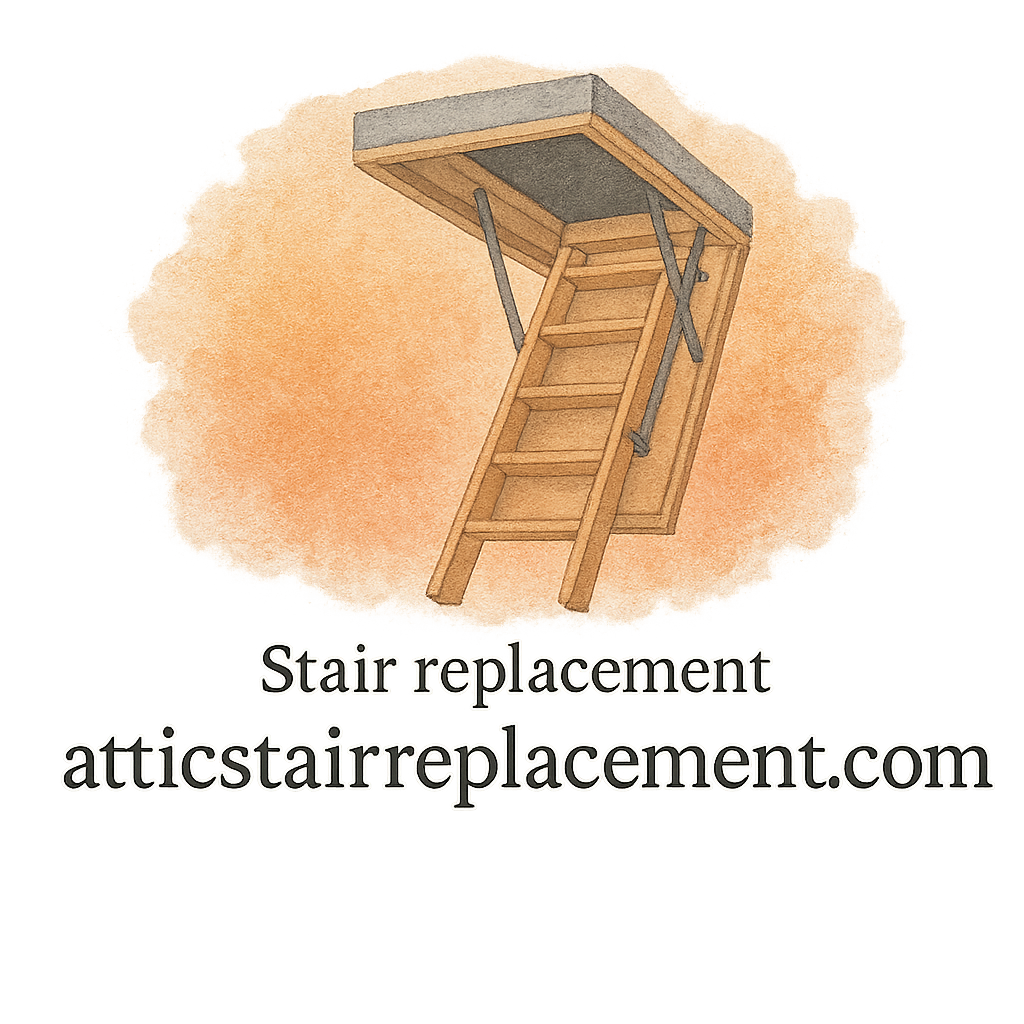Introduction
Attic stair replacement sounds simple—just swap out the old stairs for new ones, right? Not quite. Anyone who’s ever tackled this home improvement project knows it’s full of hidden challenges that can trip up even experienced DIYers. From tight attic openings to surprise costs, it’s easy to feel overwhelmed.
But here’s the good news: with the right planning, tools, and advice, you can handle these issues without breaking a sweat. In this guide, we’ll break down the 6 biggest challenges in attic stair replacement and show you practical solutions to make the process smoother, safer, and more cost-effective.
Challenge 1: Limited Space in the Attic Opening
Why small openings make attic stair replacement tricky
One of the most common headaches is dealing with an attic opening that’s simply too small. Older homes, in particular, weren’t designed with modern attic stairs in mind. You might find that the opening is only big enough for a narrow ladder, making it nearly impossible to install newer, sturdier stair systems.
Small openings not only limit the type of stairs you can install but can also make moving materials and tools into the attic frustrating.
Practical solutions for tight attic spaces
Luckily, there are workarounds. You can:
- Resize the opening (carefully, without compromising joists).
- Choose compact stair designs like telescoping or slim folding models.
- Install custom attic stairs if standard sizes don’t fit.
If you’re unsure, check out this DIY installation guide or seek expert advice to decide whether resizing or choosing a different model is best.
Challenge 2: Choosing the Right Type of Attic Stairs
Folding vs. telescoping vs. electric stairs
Another big decision is selecting the right type of stairs. Folding stairs are budget-friendly and widely available. Telescoping stairs save space and work well in smaller openings. Electric stairs are the luxury option—press a button, and they extend or retract automatically.
Each type has its pros and cons: folding models are affordable but bulky, telescoping versions are compact but can be heavy, and electric stairs are convenient but pricey.
How to pick the best option for your home
When choosing, consider:
- Space available in the attic opening.
- Frequency of use—occasional vs. daily access.
- Budget—basic folding stairs may cost $200, while electric models can run into thousands.
- Durability—a must if you’re storing heavy items.
Browse through detailed product reviews to find models that match your needs and budget.
Challenge 3: Structural Issues with Ceiling Joists
Risks of cutting into joists
Cutting into joists to expand the attic opening can be dangerous if not done correctly. Joists are critical to your home’s structural integrity, and weakening them may lead to sagging ceilings or worse.
Safe methods to reinforce or adjust joists
If you must alter joists:
- Consult a contractor before making structural changes.
- Add support beams or headers to redistribute the load.
- Avoid DIY experimentation unless you’ve studied expert installation advice.
When in doubt, it’s safer to work with a licensed contractor.

Challenge 4: Safety and Stability Concerns
Common attic stair accidents and hazards
Faulty attic stairs cause thousands of injuries each year. Loose hinges, weak materials, or improper installation can result in falls. Carrying heavy boxes while balancing on unstable stairs only adds to the risk.
Steps to make your attic stairs safer
Here are a few safety upgrades:
- Install handrails for extra support.
- Choose heavy-duty, durable models designed for frequent use.
- Follow all installation steps carefully to avoid mistakes.
- Perform regular maintenance and repair to catch issues early.
Challenge 5: Hidden Costs During Replacement
Unexpected expenses homeowners face
Attic stair replacement isn’t always as cheap as it looks. Beyond the cost of the stairs, you might face:
- Drywall repairs from resizing openings.
- Reinforcement costs for joists.
- Hardware and finishing materials.
- Labor fees if you hire a pro.
Smart budgeting tips for attic stair projects
To prevent budget shock:
- Get multiple quotes if hiring contractors.
- Factor in hidden costs like trim, insulation, and finishing work.
- Set aside a 10–15% cushion in your budget for surprises.
Check out these budget-saving tips to avoid overspending.
Challenge 6: DIY vs. Hiring a Professional
When DIY attic stair replacement works
If you’re handy with tools and the project doesn’t require cutting joists, a DIY replacement can save money. With the help of DIY guides, many homeowners manage just fine.
Signs you need a contractor instead
But if you’re facing structural changes, electrical adjustments, or safety concerns, hiring a pro ensures the job is done right. Poor job quality in this project can cost more in the long run.
For complex cases, consider browsing our expert contractor advice.
Extra Tips for a Smooth Attic Stair Replacement
Maintenance practices to extend stair life
Your new stairs will last longer with proper care. Apply these practices:
- Tighten bolts and hinges annually.
- Clean moving parts to prevent rust.
- Apply lubricant to folding mechanisms.
- Inspect for cracks or wear during seasonal checks.
Following regular maintenance helps prevent costly repairs.
Mistakes to avoid during replacement
Some common mistakes include:
- Picking the wrong size of stairs.
- Forgetting about clearance space in the attic.
- Ignoring weight capacity.
- Rushing the installation without reading the installation guide.
Avoiding these mistakes ensures a safer and longer-lasting project.
Conclusion
Attic stair replacement doesn’t have to be a nightmare. While challenges like limited space, safety concerns, and hidden costs may seem intimidating, the right approach makes all the difference. Whether you take the DIY route or hire a contractor, understanding these six challenges will help you plan ahead, stay safe, and stick to your budget.
For more guides, expert tips, and real-life product comparisons, visit Attic Stair Replacement.
FAQs
1. What is the average cost of attic stair replacement?
Most homeowners spend between $250–$750, depending on the type of stairs and labor costs.
2. How long does it take to replace attic stairs?
A straightforward DIY replacement may take 3–5 hours, while complex jobs involving joist work can take a full day or more.
3. Can I install attic stairs without cutting joists?
Yes—if your attic opening is already large enough. For smaller openings, compact stair designs like telescoping models can help avoid structural changes.
4. What type of attic stairs are the most durable?
Heavy-duty folding or aluminum telescoping stairs are among the strongest and most long-lasting options.
5. Do attic stairs add value to a home?
Yes, they make attic storage more accessible, which can be attractive to buyers during a home remodel or renovation.
6. Is DIY attic stair installation safe?
It can be if you follow safety steps carefully and avoid cutting into structural joists. Otherwise, hiring a contractor is safer.
7. How often should attic stairs be inspected?
At least once a year. Look for loose hinges, cracks, or weak steps to prevent accidents.


